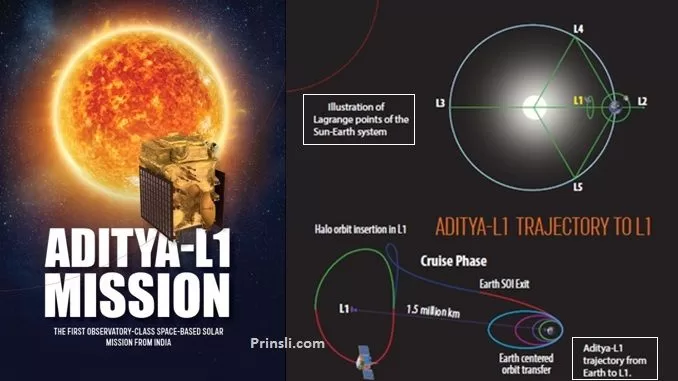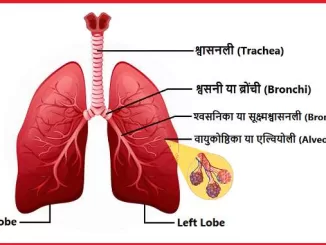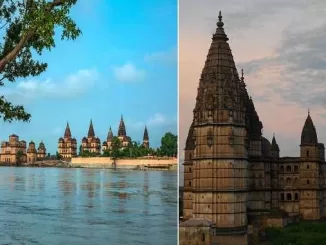
Launch of the ‘Aditya-L1’ Mission by ISRO India
ISRO will launch India’s 1st Solar Mission ‘Aditya L-1’ by the end of this year. It will be launched by ISRO PSLV rocket from Sathish Dhawan Space Centre SHAR (SDSC SHAR), Sriharikota, India.
About Aditya-L1 Mission
Aditya-L1, India’s first solar mission, is the first space-based Indian science mission to study the Sun. This will bring out the hidden secrets of the sun. Many astronomers of IIT-BHU are also involved in this ‘Aditya L1’ satellite mission project.
Initially, the spacecraft will be placed in a low earth orbit. Subsequently, the orbit will be made more elliptical and later the spacecraft will be launched towards the Lagrange point L1 by using onboard propulsion. As the spacecraft travels towards L1, it will exit the earth’s gravitational Sphere of Influence (SOI).
Read Also – Gaganyaan mission: ISRO successfully tests the LEM System
After exiting from SOI, the cruise phase will start and subsequently, the spacecraft will be injected into a large halo orbit around the Lagrange point 1 (L1) of the Sun-Earth system, which is about 1.5 million km from the Earth. The total travel time from launch to L1 would take about four months for Aditya-L1. The trajectory of the Aditya-L1 mission is shown in the figure above.
Lagrange points – For a two-body gravitational system, the Lagrange Points are the positions in space where a small object tends to stay if put there. These points in space for a two-body system such as Sun and Earth can be used by spacecraft to remain at these positions with reduced fuel consumption.
Technically at Lagrange point, the gravitational pull of the two large bodies equals the necessary centripetal force required for a small object to move with them. For two-body gravitational systems, there are a total of five Lagrange points denoted as L1, L2, L3, L4, and L5. The Lagrange points for the Sun-Earth system are shown in the figure. The Lagrange point L1 lies between the Sun-Earth line. The distance of L1 from Earth is approximately 1% of the Earth-Sun distance.
A satellite placed in the halo orbit around the L1 point has the major advantage of continuously viewing the Sun without any occultation/eclipses. This will provide a greater advantage of observing solar activities and their effect on space weather in real-time.
Read Also – G20 Summit 2023: What do Logo & Themes of G20 India 2023 represent?
The spacecraft carries seven payloads to observe the photosphere, chromosphere, and the outermost layers of the Sun (the corona) using electromagnetic and particle detectors. Using the special vantage point of L1, four payloads directly view the Sun and the remaining three payloads carry out in-situ studies of particles and fields at the Lagrange point L1.
Aditya L1 Science Payloads
The Aditya L1 payloads suit is expected to provide the most important information to understand the problems of coronal heating, Coronal Mass Ejection, pre-flare and flare activities, and their characteristics, dynamics of space weather, the study of the propagation of particles, and fields in the interplanetary medium, etc.
Science Objectives of Aditya-L1 Mission
The major science objectives of the Aditya-L1 mission are as follows.
• Understanding the Coronal Heating and Solar Wind Acceleration.
• Understanding initiation of Coronal Mass Ejection (CME), flares, and near-earth space weather.
• To understand the coupling and dynamics of the solar atmosphere.
• To understand solar wind distribution and temperature anisotropy.
Other science objectives of the Aditya-L1 mission are as follows.
• Study of Solar upper atmospheric (chromosphere and corona) dynamics.
• Study of chromospheric and coronal heating, physics of the partially ionized plasma, initiation of the coronal mass ejections, and flares.
• Observe the in-situ particle and plasma environment providing data for the study of particle dynamics from the Sun.
• Physics of solar corona and its heating mechanism.
• Diagnostics of the coronal and coronal loops plasma: Temperature, velocity, and density.
• Development, dynamics, and origin of CMEs.
• Identify the sequence of processes that occur at multiple layers (chromosphere, base, and extended corona) which eventually leads to solar eruptive events.
• Magnetic field topology and magnetic field measurements in the solar corona.
• Drivers for space weather (origin, composition, and dynamics of solar wind.
The uniqueness of the Aditya L1 Mission
• First time spatially resolved solar disk in the near UV band.
• CME dynamics close to the solar disk (~ from 1.05 solar radius) and thereby providing information in the acceleration regime of CME which is not observed consistently.
• On-board intelligence to detect CMEs and solar flares for optimized observations and data volume.
• Directional and energy anisotropy of solar wind using multi-direction observations.
Read Also : India’s first Solar Mission Aditya L1 – Important Facts
Tags: Aditya-L1, ISRO, India, What is Aditya L-1 mission,ISRO launch India Mission Aditya L-1
Copyrighted Material © 2019 - 2024 Prinsli.com - All rights reserved
All content on this website is copyrighted. It is prohibited to copy, publish or distribute the content and images of this website through any website, book, newspaper, software, videos, YouTube Channel or any other medium without written permission. You are not authorized to alter, obscure or remove any proprietary information, copyright or logo from this Website in any way. If any of these rules are violated, it will be strongly protested and legal action will be taken.





Be the first to comment